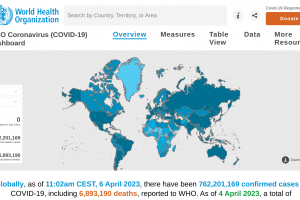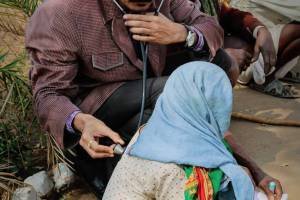Face Mask Research April 2023
Face Mask Research April 2023
The U.S. National Institutes of Health (NIH) says wearing face masks can trap fluid droplets that exit the mouth, reducing the potential spreading of airborne viruses such as the SARS-CoV-2 coronavirus and influenza.
The peer-review journal Annals of Internation Medicines published its eighth update in September 2022: a living rapid review on using masks to prevent respiratory virus infections. In summary, the clinical evidence on the benefits of mask use when outside remains insufficient and inadequate.
On January 30, 2023, the Cochrane Database of Systematic Reviews Review published: Physical interventions to interrupt or reduce the spread of respiratory viruses: There is uncertainty about the effects of face masks. On March 10, 2023, a new statement was published: The original Plain Language Summary for this review stated, 'We are uncertain whether wearing masks or N95/P2 respirators helps slow the spread of respiratory viruses based on the studies we assessed.' This wording was open to misinterpretation, for which we apologize. While scientific evidence is never immune to misinterpretation, we take responsibility for not making the wording clearer from the outset. We are engaging with the review authors with the aim of updating the Plain Language Summary and abstract to clarify that the review looked at whether interventions to promote mask-wearing help slow the spread of respiratory viruses.
The Burbio School Mask Policy Tracker highlights current trends in K-12 schools in the USA.
Mask Recommendations April 2023
At ECCMID on April 6, 2023, abstract #5979: Unmasking the mask: a time-series analysis of nosocomial COVID-
19 rates before and after removal in London (Dec 2021- Sept 2022). 'We found no evidence that a mask policy significantly impacts the rate of nosocomial SARS-CoV-2 infection with the Omicron variant. While these data do not preclude a small effect, the real-world benefit of this mitigation measure in isolation is likely to be modest within a healthcare setting.
Texas Senate Bill 29, passed on April 3, 2023, prohibits any governmental entity from imposing mask or vaccine mandates or closing private businesses and schools in response to COVID-19.
On April 3, 2023, the Oregon Health Authority announced that masks would no longer be required in healthcare settings.
Wearing a face mask became mandatory in various hospitals across India on March 31, 2023.
A survey published on March 22, 2023, found hospital approaches vary in response to universal masking after U.S. public health "unmasking" guidance.
Israel's Ministry of Health announced that as of February 16, 2023, the requirement to wear masks in medical facilities and nursing homes is canceled, and the need to wear a mask when traveling to an isolation accommodation (only if confirmed) remains in effect until May 15, 2023. The Ministry of Health recommends that at-risk populations, including but not limited to people 65 years and older, wear masks indoors to prevent infection.
The World Health Organization (WHO) continues to recommend (Jan. 2023) the use of masks by the public in specific situations. For example, masks are recommended following recent exposure to COVID-19 when someone has or suspects they have COVID-19, when someone is at high risk of severe COVID-19, and for anyone in a crowded, enclosed, or poorly ventilated space; previously, WHO recommendations were based on epidemiological situations.
As of September 23, 2022, the U.S. Centers for Disease Control and Prevention (CDC) no longer recommends universal N95 masking in healthcare settings unless the facilities are located in areas of high COVID-19 transmission. And noted that vaccination status is no longer used to inform source control, screening testing, or post-exposure recommendations.
A June 2023 article published by ScienceDirect: double standard for pharmacological versus non-pharmacological interventions - highlights why gathering high-quality through randomized trials should be required to guide public health recommendations.
Medical Masks Vs. N95 Respirators
A study published in the Annals of Internal Medicine found that the effects of medical masks versus N95 respirators on risk for SARS-CoV-2 infection confirmed by reverse transcriptase polymerase chain reaction were within the predefined noninferiority margin (hazard ratio, 1.14 [95% CI, 0.77 to 1.69]).
A study published by the NIH in 2020: P2/N95 respirators & surgical masks to prevent SARS-CoV-2 infection: Effectiveness & adverse effects - concluded the existing epidemiological evidence does not enable a definitive assessment of the effectiveness of respirators compared to surgical masks in preventing infection.
Airline Air Quality
A study conducted by the U.S. Department of Defense (DOD) supports the conclusion that the risk of COVID-19 exposure onboard airplanes is almost zero, thanks to advanced air filtration systems, required mask-wearing, and diligent cleaning protocols. And even when the plane is full, only 0.003% of infected air particles could enter the breathing zone of seated, masked passengers.
COVID-19 Mask Research 2023
January 11, 2023 - This study's findings highlight the utility of mandates in supporting high face mask usage rates during the COVID-19 pandemic.
November 29, 2022 - Original Research: Medical Masks Versus N95 Respirators for Preventing COVID-19 Among Health Care Workers. Conclusion: Among healthcare workers who provided routine care to patients with COVID-19, the overall estimates rule out a doubling in the hazard of RT-PCR–confirmed COVID-19 for medical masks when compared with HRs of RT-PCR–confirmed COVID-19 for N95 respirators. The subgroup results varied by country, and the overall estimates may apply to individual countries because of treatment effect heterogeneity.
May 3, 2022 - The journal Physics of Fluid published a study that found that the flow through the mask increases with increased mask porosity. The gap leakage is inversely proportional to the mask's porosity. And, wearing two face coverings does not offer more protection against respiratory protection.
April 7, 2022 - A non-peer-reviewed study analyzed the use of face masks on the impact of COVID-19 incidence among 10–12-year-olds in Finland. 'According to our analysis, no additional effect seemed to be gained.
March 29, 2022 - Update Alert #7: Masks for Prevention of Respiratory Virus Infections, Including SARS-CoV-2, in Health Care and Community Settings. In summary, new evidence slightly strengthened the evidence of the benefit of masks versus no masks in community settings to low–moderate, with no change in insufficient strength of evidence for N95 versus surgical masks in health care settings. A final update is planned for six months.
March 22, 2022 - PNAS published a Research Article: Opening NFL stadiums in 2020 likely had no impact on local COVID-19 case counts.
Feb. 11, 2022 - The CDC reported: Consistent use of a face mask or respirator in indoor public settings was associated with lower odds of a positive SARS-CoV-2 test result (adjusted odds ratio = 0.44).
Feb. 7, 2022 - The ECDC reported that wearing a face mask should be considered in crowded outdoor settings where physical distancing is impossible when the public health objective is to limit community transmission. And the minimal scientific evidence regarding the use of respirators in the community does not support their mandatory use in service of other types of face masks in the community.
2015 - This study is the first cluster randomized clinical trial of cloth masks, and the results caution against using cloth masks. Moisture retention, reuse of cloth masks, and poor filtration may result in an increased risk of infection. As a precautionary measure, cloth masks should not be recommended for HCWs, particularly in high-risk situations,



_0.jpg)

